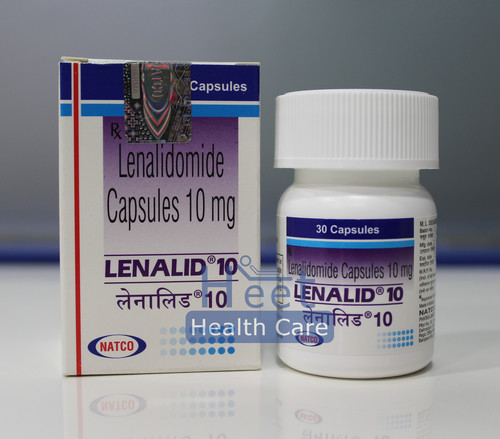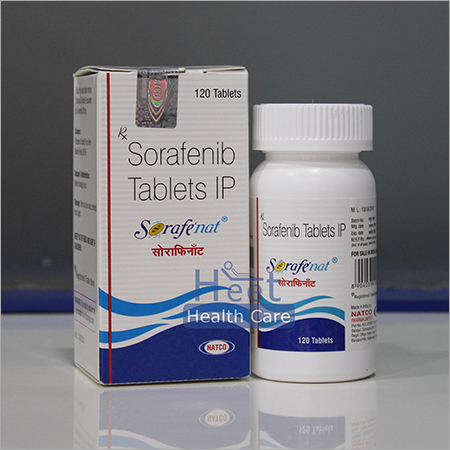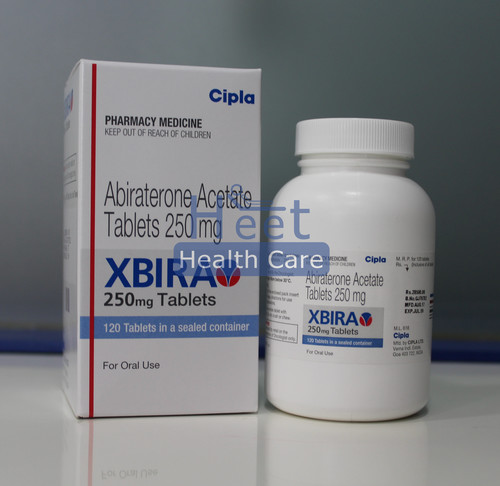Gemcitabine Injection Ip 200 Mg
Price 450 INR/ Box
Gemcitabine Injection Ip 200 Mg Specification
- Dosage Form
- As Per Suggestion
- Origin
- India
- Feature
- Other
- Ingredients
- Vitamin
- Application
- Other
- Storage Instructions
- Cool & Dry Place
- Shelf Life
- 2 Years
Gemcitabine Injection Ip 200 Mg Trade Information
- Minimum Order Quantity
- 100 Boxes
- FOB Port
- Delhi, Mumbai
- Payment Terms
- Letter of Credit (L/C), Western Union, Paypal, Letter of Credit at Sight (Sight L/C), Telegraphic Transfer (T/T), Cash in Advance (CID), Cheque, Cash Advance (CA)
- Supply Ability
- 10000 Boxes Per Month
- Delivery Time
- 7 Days
- Packaging Details
- per Box 1 vial
- Main Export Market(s)
- Australia, North America, South America, Eastern Europe, Middle East, Western Europe, Africa, Central America, Asia
- Main Domestic Market
- All India
About Gemcitabine Injection Ip 200 Mg
An injectable drug called gemcitabine Injection IP 200 mg is used to treat various malignancies. Gemcitabine, an antimetabolite agent that prevents the growth and division of cancer cells, is its main active component. Since the injection is given directly into the bloodstream, cancer cells can be effectively delivered to and targeted. Pancreatic cancer, lung cancer, breast cancer, bladder cancer, among other cancers, are all frequently treated with gemcitabine. Based on the patient's unique cancer type, stage, and general health, the dosage and treatment plan are chosen. In addition to bone marrow suppression, nausea, vomiting, and flu-like symptoms, gemcitabine may also have unwanted consequences. To manage potential adverse effects and improve treatment outcomes, close observation by medical personnel is necessary.
Features and Advantages of 200 mg Gemcitabine Injection IP:
Features:
1. Gemcitabine, an antimetabolite chemotherapeutic drug, is the active ingredient found in Gemcitabine Injection IP 200 mg.
2. Intravenous administration: The drug is quickly and efficiently delivered to the cancer cells by being injected straight into the circulation.
3. Broad Spectrum: Gemcitabine has been shown to be effective in treating a range of malignancies, including pancreatic, lung, breast, ovarian, and bladder cancers.
4. Gemcitabine disrupts the growth and replication of cancer cells by acting during particular stages of the cell cycle.
5. Combination therapy: To increase effectiveness, it is frequently used in conjunction with other chemotherapeutic medicines or treatments.
Benefits:
1. Gemcitabine's capacity to kill cancer cells is its main advantage, as doing so causes tumours to retreat and shrink.
2. Survival Rates Are Better: Gemcitabine treatment has been linked to higher survival rates across a range of cancer types.
3. Palliative Care: Gemcitabine can provide palliative care for individuals with advanced cancer, reducing symptoms and improving quality of life.
4. Neoadjuvant and Adjuvant Therapy: It can be applied as adjuvant therapy to stop the spread of cancer after surgery or as neoadjuvant therapy to shrink tumours before surgery.
5. Gemcitabine is a targeted drug that attacks cells that divide quickly, including cancer cells, while causing the least amount of harm to normal organs.
6. Gemcitabine has a long history of widespread use and a well-established safety and effectiveness profile.
7. The patient's cancer kind, stage, and response to therapy can all be taken into account when determining the dosage and treatment plan.
8. Gemcitabine can frequently be administered outside of the hospital, minimising the requirement for overnight stays.
9. Research & Innovation: Clinical trials and ongoing research continue to examine new applications for Gemcitabine in treating a range of malignancies.
Prior to beginning therapy with Gemcitabine, patients must discuss potential side effects and advantages with their doctor. To control potential side effects and achieve the greatest results, regular medical monitoring is crucial. Gemcitabine Injection IP 200 mg use demands competence, and treatment choices should be developed in collaboration between patients and their oncologists while taking into account unique circumstances and treatment objectives.
Gemcitabine Injection IP 200 mg Indications:
1. For the treatment of advanced or metastatic pancreatic cancer, gemcitabine is frequently utilised.
2. Non-small cell lung cancer: It is used either alone or in conjunction with other chemotherapy medications.
3. Gemcitabine may be used to treat breast cancer that has spread to other organs.
4. It is occasionally used to treat ovarian cancer in advanced stages.
5. For the treatment of advanced or metastatic bladder cancer, gemcitabine is used.
6. Soft Tissue Sarcomas: It may be utilised in the treatment of some forms of this cancer.
7. Cancer of the Biliary Tract: Gemcitabine is used to treat biliary tract cancer.
Gemcitabine Injection IP 200 mg Side Effects:
1. One of the main adverse effects is bone marrow suppression, which lowers the generation of blood cells and raises the risk of bleeding, infections, and anaemia.
2. Some patients may develop nausea and vomiting while receiving therapy.
3. Gemcitabine may make you feel weak or tired.
4. Symptoms that are similar to the flu include fever, chills, and aches and pains in the muscles.
5. Hair Loss: Alopecia, or temporary hair loss, can occur in some people.
6. Skin responses: It's possible to get rashes or other skin responses.
7. Gemcitabine may alter liver function tests if there are abnormalities in liver enzymes.
8. Gastrointestinal disturbances, such as diarrhoea or constipation, can cause digestive issues.
9. Rarely, Gemcitabine may cause breathing difficulties, including shortness of breath.
10. Allergic Reactions: Patients may develop allergies to the drug.
11. Hand-Foot Syndrome: It may result in a skin reaction known as hand-foot, which is characterised by redness, swelling, and peeling of the palms and soles.
12. Cardiac Toxicity: Gemcitabine can occasionally have negative effects on the heart.
Healthcare professionals should keep a close eye on patients getting Gemcitabine Injection IP 200 mg to control any potential adverse effects and guarantee the safety and effectiveness of the medication. To reduce adverse effects and improve treatment outcomes, dosage changes and supportive care may be required. Any symptoms that are troubling should be immediately reported by patients to their healthcare practitioners. Gemcitabine Injection IP 200 mg should only ever be used under the guidance of a skilled oncologist or medical professional. To get the greatest treatment outcomes, it's important to carefully weigh the advantages of this medication in treating different tumours against any potential drawbacks.



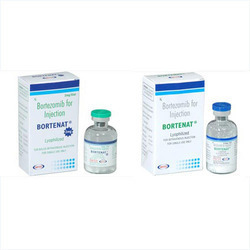
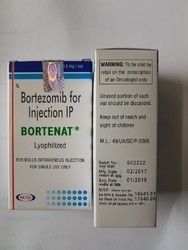


Price:
- 50
- 100
- 200
- 250
- 500
- 1000+
More Products in Anti Cancer Medicine Category
Lenalid 10 Mg Capsules
Price 4800 INR / Bottle
Minimum Order Quantity : 10 Bottles
Origin : India
Shelf Life : 2 Years
Dosage Form : As Per Suggestion
Storage Instructions : Cool & Dry Place
Erlocip Erlotinib Tablets IP 150 mg
Price 5000 INR / Box
Minimum Order Quantity : 10 Boxes
Origin : India
Shelf Life : 2 Years
Dosage Form : As Per Suggestion
Storage Instructions : Cool & Dry Place
Sorafenat Sorafenib Tablets
Price 8000 INR / Box
Minimum Order Quantity : 100 Boxes
Origin : India
Shelf Life : 2 Years
Dosage Form : As Per Suggestion
Storage Instructions : Cool & Dry Place
Xbira Abiraterone Acetate 250mg
Price 16000 INR / Bottle
Minimum Order Quantity : 1 Bottle
Origin : India
Shelf Life : 2 Years
Dosage Form : As Per Suggestion
Storage Instructions : Cool & Dry Place
 |
HEET HEALTHCARE PVT. LTD.
All Rights Reserved.(Terms of Use) Developed and Managed by Infocom Network Private Limited. |

 Send Inquiry
Send Inquiry English
English Spanish
Spanish French
French German
German Italian
Italian Chinese (Simplified)
Chinese (Simplified) Japanese
Japanese Korean
Korean Arabic
Arabic Portuguese
Portuguese Send Inquiry
Send Inquiry
